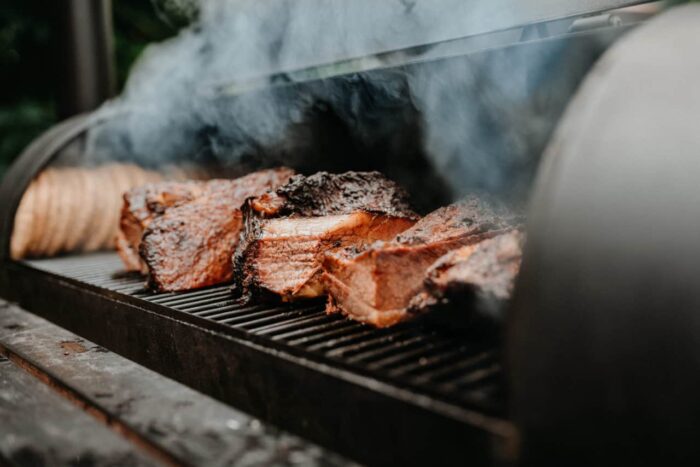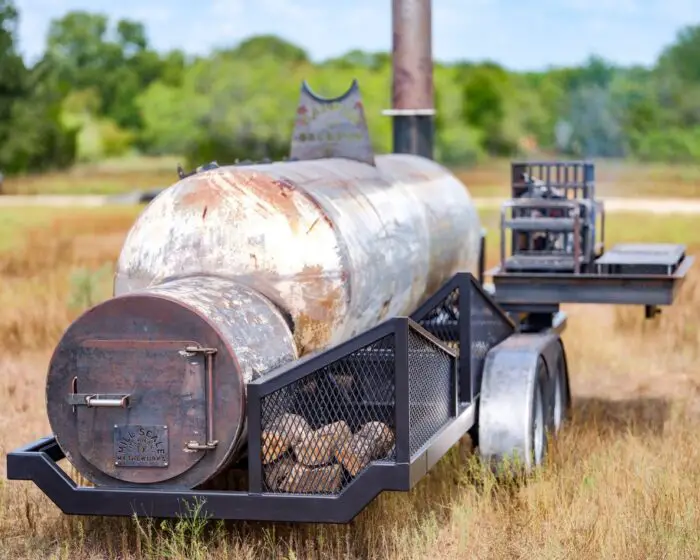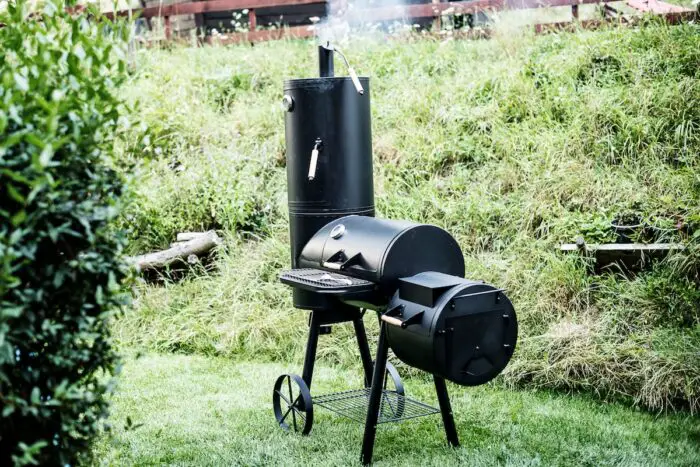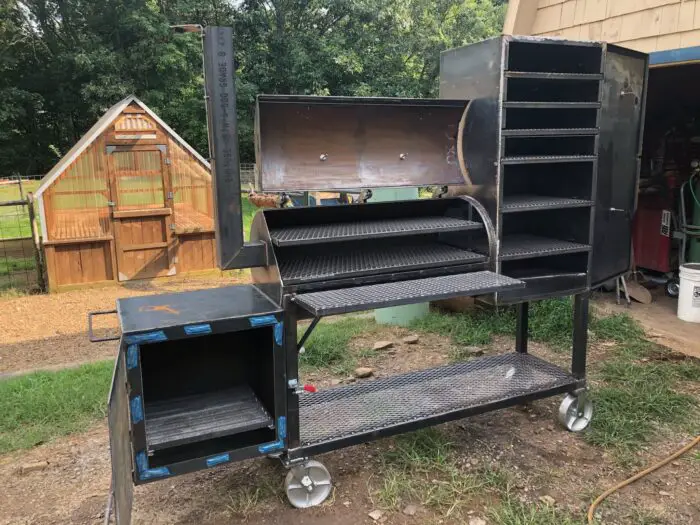Grilled foods are not limited to restaurants only, but you also enjoy the mouth-watering taste of barbecue in your backyard with the best smokers. The smoker units add a distinct and tasty flavor to the dishes and allow users a consistency of temperature. The smoker grills are the best technology for food lovers, but the scenario is not as effortless as it sounds.
When you enter the market, you’ll see a train of smokers, each claiming itself the best of all. These lots of terminologies and products can be puzzling for you all and might leave you inquisitive “what is a reverse flow smoker?”. Mainly, there are two types of smokers: offset smokers and reverse flow smokers. This blog will share information about reverse flow smokers, how it works, its benefits and drawbacks. So, let’s not waste a second and dig into the article:
What Is A Reverse Flow Smoker?

A reverse flow smoker boasts a little tweaked design from an offset smoker. The standard smokers come with a firebox mounted on one side and a chimney on its other side, shielding the food from direct fire. On the other hand, the reverse flow smoker has a chimney and firebox, both on the same side. The smoker travels from the firebox through the baffle plate to the next side of the reverse smoker so that it strained back towards the chimney across the grill section.
Don’t fret! Let me explain the difference: the reverse flow smokers have an additional baffle which makes this smoker more advantageous. The baffle reverses the smoke, facilitating more even smoke distribution to the food. It also shields the food from direct fire, and in the end, cools down the smoke, easing the internal temperature management.
Besides the convenience in internal functioning, a reverse flow smoker is also easy to use. It offers excellent adjustability, maintenance, and fueling as you can light up the source, i.e., charcoal, by simply using a chimney starter. Place the coal in the firebox along with some wood pieces to generate a more intense smoky savor. After that, place the meat on a rack and close the lid, and you’re done.
Don’t worry; you can also adjust the dampers in between. Please monitor the temperature at least every hour and add more wood or coal if necessary. The primary objective is that you smoker should “keep smoking” while waiting for the meat to tender.
How Do You Use A Reverse Flow Smoker?

Before setting up a reverse flow smoker, please prepare your meat. Meat preparation involves seasoning your favorite dry ingredients; after that, leave the seasoned meat overnight in your fridge. This step is also called marination, and it not only helps the meat to tender readily and evenly but adds an excellent flavor to every bite of it.
Then, use the chimney starter to light up the coal and wooden pieces, which I’ve already explained above. I suggest you use hardwood for smoking because it burns slower and adds an intense savor to the food. Please never use softwoods like cedar or pine wood for smoking meat.
Adjust the dampers to reach to 225-degree Fahrenheit; this is the ideal temperature for cooking almost all types of meat over a home smoker. Once you’re done with it, place the meat on the cooking rack, close the smoker’s lid, and let it tender. Temperature monitoring and flipping of meat pieces are essential throughout the process to get them evenly cooked delicious tenderized meat.
What Is The Best Reverse Flow Smoker?

Now that you’ve gone through enough information to decide whether you need a reverse flow smoker or not, it’s time to look for the best product in this category. I have tried numerous smokers, and after years I ended up on one barbecue partner which is Oklahoma Joe Highland. This smoker boasts power efficiency, convenience, portability, excellent profile, smart features, shelves, cabinets, and much more, which will make smoking effortless for you—at a good price range.
However, if you’re not conscious about budget and want a good investment then you can also consider Lang 36’’ Original. This Lang smoker is a heavy-duty reverse smoker that comes with impressive build quality and features, facilitating durability, user-friendliness, and competence. This is the true definition of value for money.
- Improved flow of smoke
- Facilitate evenly cooking
- Shields food from direct heat
- Adds good flavor
- Includes grease pan
- Convenient
- Work on single-temperature
- Required more fuel
- Possess slower cooking
FAQs

Is a reverse flow smoker better?
The reverse flow smokers are different from traditional smokers in terms of profile. There is an additional baffle that provides reverse and evenly smokes to the food. In a few words, reverse flow smokers are better in taste, convenience, temperature maintenance, and uniform distribution of smoke and heat. However, these smokers require more time and fuel for cooking meat.
Why does my meat turn black in the smoker?
There are two conditions behind why meat turns black in smokers: issues related to smoking or sometimes a human error. In case of technical difficulties, excessive moisture or creosote are the main reasons behind this problem. But, sometimes, it can also happen due to poor air ventilation or because of stale smoke. On the other hand, if you cook the meat on high flame or use extra wood, it will turn black.
What wood is best for smoking tri-tip?

I found the “Red Oak” wood type great for smoking tri-tip because of its convenience, slow-burning, and flavor. But, red oak is not readily available in some areas, so that you can use some other wood types as a substitute. For example, try applewood, cherry wood, hickory, or pecan for this purpose.
Wrapping It Up
Reverse flow smokers are an excellent option in today’s industry if you are looking for a consistent, efficient, and reliable smoker to enhance the taste of your food. These smokers have also solved the hot spot issues, which were generally required with conventional smokers, making the smoking experience more effortless. It delivers uniform heat, smoke, and flavor to every inch of food, making it evenly tender and delicious!
Related Posts:
- Pellet Smoker vs Electric Smoker - What's Better? -…
- Offset Smoker Vs. Pellet Smoker - Which is Better…
- Is a Pellet Grill Better Than a Smoker? - 2022 Guide
- 10 Best Smoker Accessories 2022 - Review and Buying Guide
- What is the Best Meat to Cook on a Pellet Smoker? -…
- 7 Best Recipes for Your Pellet Grill & Smoker 2022
